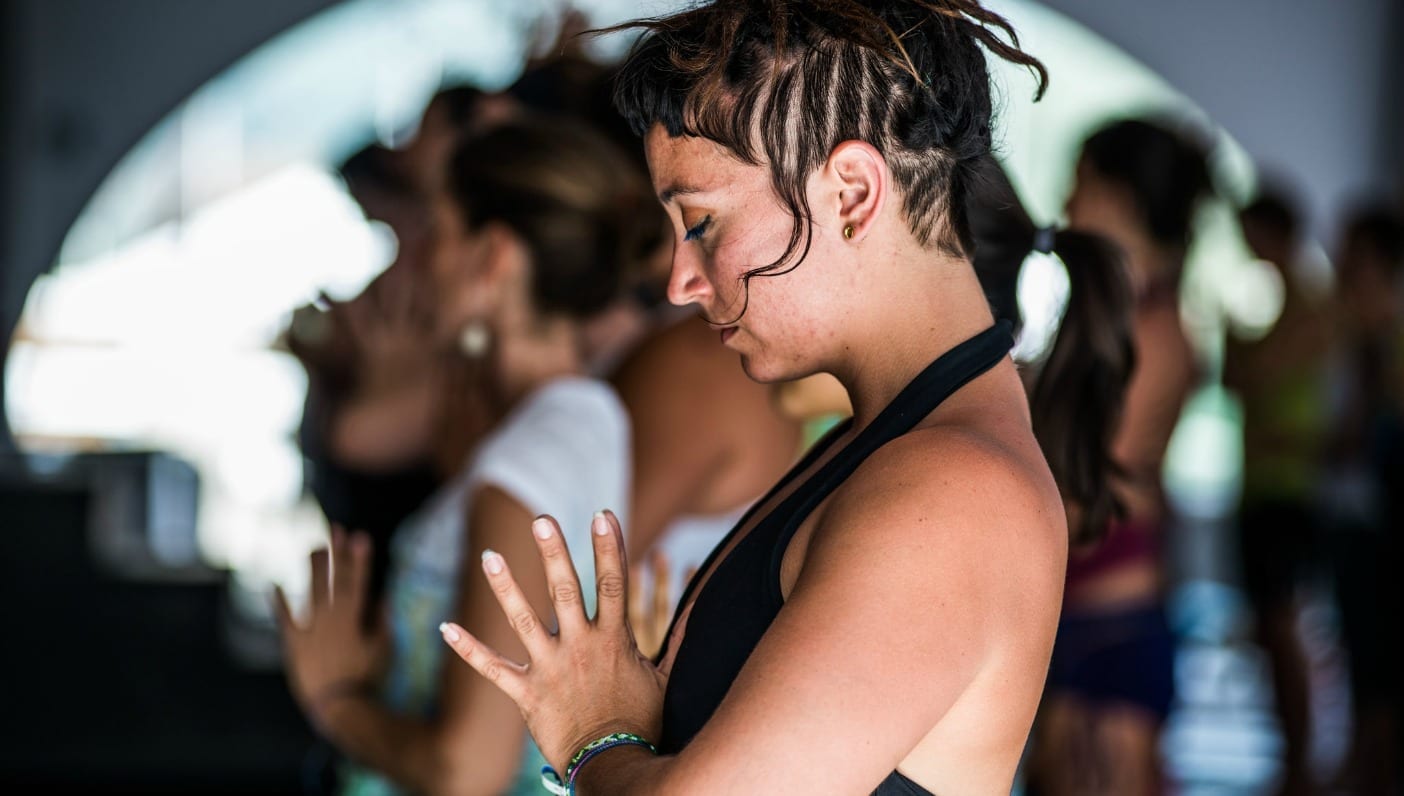
All yoga is good yoga.
Each and every branch of yoga is good for the soul. Whether I was teaching or participating, I’ve never left a yoga class without feeling better than when I walked in. Science has proven the benefits of yoga on the brain. Deep breathing, the stretching of muscles, and meditation all increase cognitive functions and creativity. These practices also alter our reactions to stressors and release happy chemicals into our brains.
Yoga is used as a means of improving mental, physical, and spiritual health. Four of the major lineages of yoga are described below. Each one offers something different and provides unique benefits for the brain, body, and spirit.
Hatha
Translation: “sun and moon”
About Hatha: Hatha yoga is the most popular form of yoga in the U.S. and focuses on the asana (physical) practice along with pranayama (breathing) and dhyana (meditation). Most lineages in this article are under the umbrella of Hatha. Legend says that Lord Shiva is credited with starting hatha yoga. It was introduced in the 15th century by yogic sage, Yogi Swatmarama in Hatha Yoga Pradipika.
Hatha yoga is typically slower paced, with a focus on balancing the “sun” and “moon” (masculine and feminine) energies. It’s about unification. Today it’s widely being used as a form of exercise, but traditionally its purpose is to awaken the Shakti (energy) that resides within us.
Practitioners: Hatha yoga is great for beginners. Classes are easygoing, gentle, and slow-paced—ideal for learning correct alignment and working with the breath. Poses are held for longer amounts of time, so new yogis can process the correct positioning of each pose.
Affect on the Brain: Hatha yoga increases cognitive skills, decreases feelings of depression or anxiety, and reduces stress. Due to hatha being a slow, gentle practice, it allows the practitioner to focus on the breath, thus leading to more rational decision-making and a calmer approach to managing stress.
Ashtanga
Translation: “having eight parts”
About Ashtanga: Ashtanga is a Vinyasa style (link of breath and movement) of yoga popularized by K. Pattabhi Jois. This form of yoga has six series of sequenced poses, which increase in difficulty. Many practitioners spend their lives working on the primary series. Ashtanga can be thought of as a rigorous form of hatha yoga. The asana (physical practice) involves standing and seated poses, as well has back-bends, inversions, and of course, breathing. The eight limbs refer to the eight-fold path in Patanjali’s Yoga Sutras. In a nutshell, the eight limbs are guidelines of how to live a purposeful and joyous yogi life.
Practitioners: If you’re athletic, enjoy a hefty challenge, and appreciate a set routine, you’ll love ashtanga. Traditionally the practice is self-led, which teaches self-discipline, responsibility, and commitment. Ashtanga is an old school, take it back to the roots style of traditional yoga.
Affect on the Brain: When we practice self-discipline and maintain personal commitments we teach ourselves how to reach our goals. Learning how to persevere will make daily life smooth and enjoyable. Repeating positive actions and continually challenging ourselves both physically and mentally allows us to learn innovative ways to deal with stress. We teach our brains new ways of acting, reacting, thinking, and moving through blockages in life.
Iyengar
Translation: Iyengar is named after its creator, B.K.S Iyengar.
About Iyengar: Iyengar yoga was introduced and created by B.K.S. Iyengar, who is said to have heavily contributed to the popularity of yoga in the West. This style of practice is known for its use of props and focus on alignment. The purpose of the props is to ensure the students are performing the correct positioning in each pose. Iyengar typically refers to a type of ashtanga yoga.
Practitioners: Yogis with injuries and individuals looking to fine-tune their asana (physical) practice will enjoy Iyengar yoga. For people who need a disciplined and in-depth instruction of poses, Iyengar is golden. This type of yoga will teach you the correct alignment for all poses during class—very important for a safe practice.
Affect on the Brain: Due to the use of props in each pose, students are able to fine-tune each posture while putting less pressure on muscles assisting in overcoming physical injuries. Spending time finding the correct alignment in each pose allows the mind to calm, thus leading to an increase in focus, concentration, and relaxation. The strict discipline of Iyengar along with pranayama (breathing) assists in increasing mental stability and clarity during and after practice.
Kundalini
Translation: “coiled one”
About Kundalini: Yogi Bhajan was responsible for creating and spreading modern Kundalini yoga in the 20th century. The purpose of this form of yoga is to awaken the power, Shakti, which exists inside of each of us. Symbolized by a coiled snake resting at the base of the spine, this practice uses fast, repetitive movements accompanied by various pranayama (breathing) techniques such as Breath of Fire, to awaken the serpent. The repetitive motions are held for longer periods of time than in other forms of yoga, often several minutes. There is a special emphasis on chanting and the use of mantras during meditation. Some say they experience a “yoga buzz” during and after practicing kundalini yoga. I like to think of this “buzz” as spiritual enlightenment.
Practitioners: Kundalini is intense. Need some spice in your life? Kundalini it is. Kundalini is a special variation of yoga. If you’re intrigued by the idea of heightened energy with less physical movement and more breath, give it a go.
Affect on the Brain: Kundalini awakens the body and the mind. The brain comes alive as levels of awareness and energy are heightened. When we activate the brain in this way it has been known to slow down the aging process and increase immunity functions. It also sharpens focus, increases memory, and helps us to be alert and make more conscious decisions.
Photo by Ali Kaukas
—
